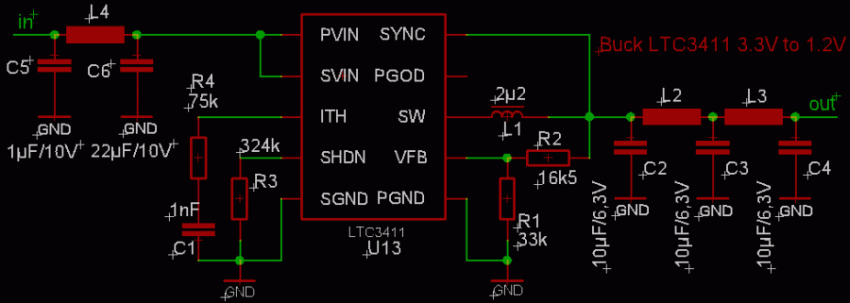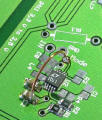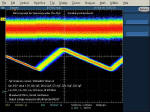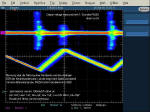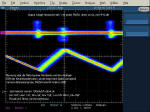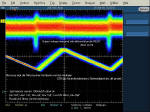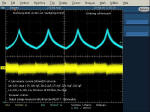|
|
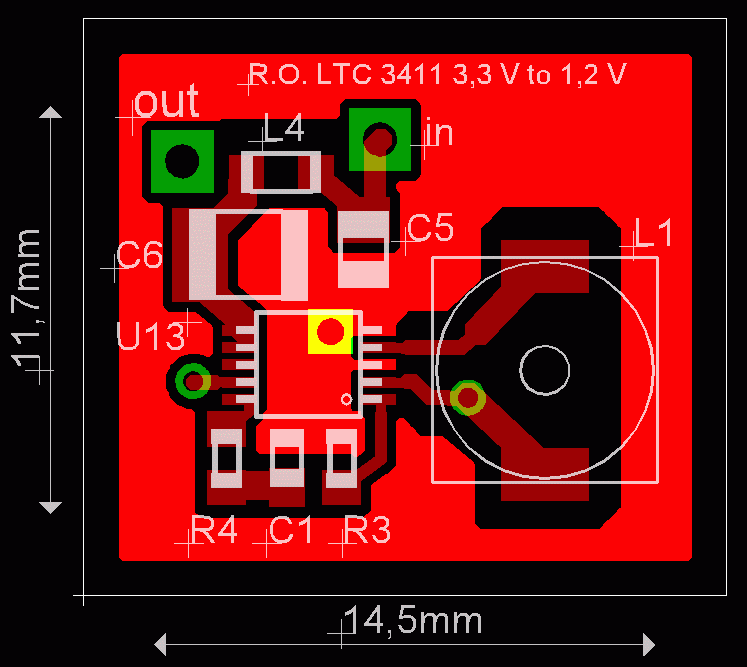 |
Figure 2 Layout "Out" and "In" are soldering pads for a thin wire. Under the IC the ground terminal. |
|
Package: L1 shielded inductance L4 Ferrit SMDL2012C (0805) C1 ceramik (0603) C5 ceramik (0805) C6 ceramik (1210) R3 (0603) R4 (0603) U13 DCDC (MSOP10) |
Layout solder side:
 |
Package: L2 ferrit SMD L2012C (0805) L3 ferrit SMD L2012C (0805) C2 ceramik (0805) C3 ceramik (0805) C4 ceramik (0805) R1 (0603) R2 (0603) |
|
Figure 3 a simple layout |
Layout notes: make it small, the shown is a suggestion taken from my application.
Component side:
-
The ground pads is in star point connection. The connection pin 5 "Powerground" is shortest possible to the neutral point. The ground connection of the input capacitors C5 & C6 is also shortest possible to the neutral point. Important, the ground of timing parts no power currents flows in this part of the layout, no calvanic coupling.
-
The inductance L1 has distance to the circuit. Although a shielded inductance was used here, no parts should be placed on the opposite side of inductance. If it cannot be avoided, then in no case the IC or the very sensitive feedback network from R2 and R1.
-
The wires of inductance L1 should be short as possible, since in them higher frequency currents flow.
-
A parasitic parallel capacitance of inductance L1 is to be avoided.
Solder side:
-
The ground connection of the output filter condensers goes directly to the neutral point, high frequency currents through these condensers hardly flows through the short piece between R1 (feedback resistance) and the neutral point.
-
R2 close to C2, long wires in the feedback network - avoid it.
-
L2 and L3 spaced layout around them to reduce the parasitic capacitance.
-
Place the low pass in the order that the resulting parasitic series inductance ESL of the capacitor is low as possible.
Fehlendes an der Schaltung:
-
not used in the feedback the 22pF Lead compensation capacitor (15pF to 33pF see Figure 7 in the data sheet). Improves stability, test it. Circiut was stable without.
-
Pin 2 "Synch/Mode" choose operating mode: Burst - Pulse Skipping - Forced Continuous choosed here the Forced Continuous, easy filtering, works goog with a constant load. The Layout don't show the load.
